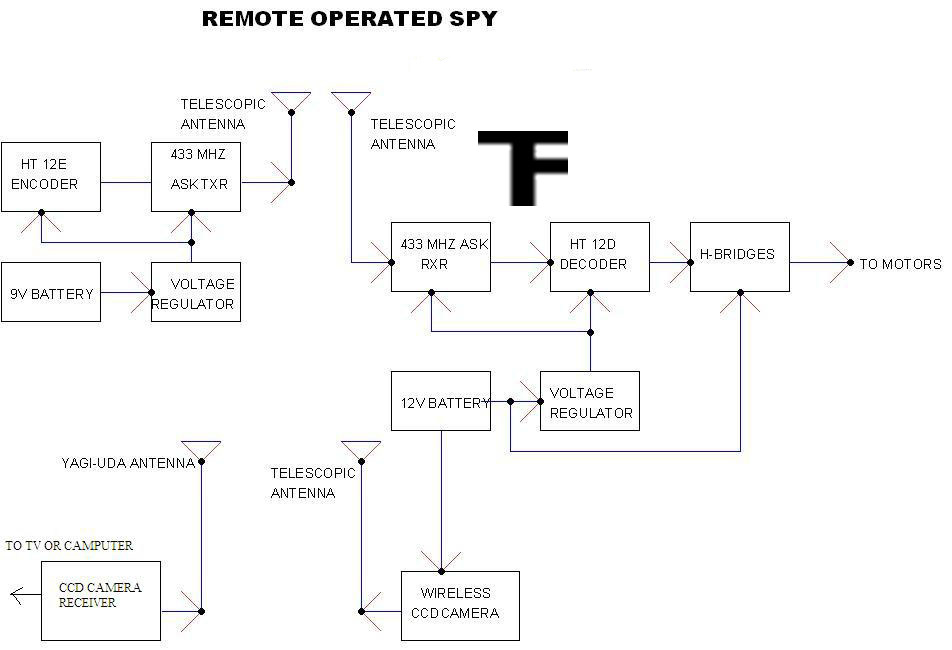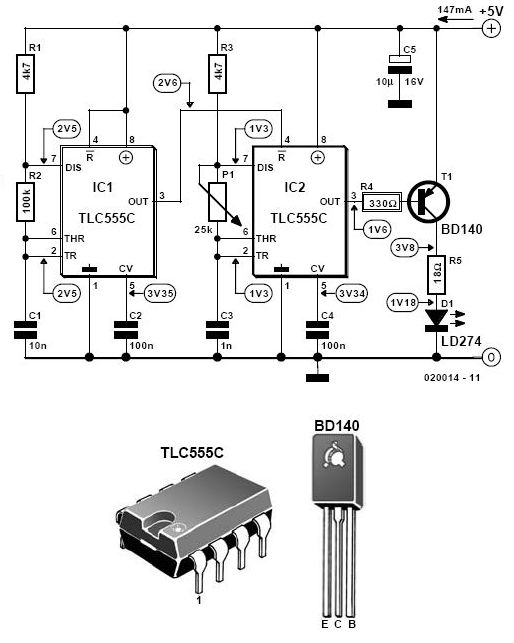
remote operated spy robot circuit

A robot that operates when you send messages through your phone. Your mobile device serves as the remote controller for the robot. This means that if the robot is in London and you are in Mumbai, you can still control it. This project is an excellent opportunity for diploma students and is likely to attract significant attention.
The project involves creating a mobile-controlled robot that can be operated from a considerable distance using SMS (Short Message Service) technology. The primary components of this system include a microcontroller, a GSM module, motor drivers, and a mobile robot chassis.
The microcontroller, such as an Arduino or Raspberry Pi, serves as the brain of the robot, processing incoming messages and translating them into commands for the robot's movement. The GSM module allows the microcontroller to receive SMS messages sent from a mobile phone. When a user sends a specific message, the GSM module decodes it and forwards the command to the microcontroller.
Motor drivers are utilized to control the movement of the robot's wheels or tracks. These drivers receive signals from the microcontroller and adjust the power supplied to the motors, enabling the robot to move forward, backward, or turn.
The mobile robot chassis provides the physical structure for the robot, housing all the electronic components and ensuring stability during operation. The design can vary based on the intended application, ranging from simple wheeled robots to more complex designs equipped with sensors and cameras for navigation and feedback.
To enhance the project, additional features such as obstacle detection, video streaming, or even a feedback system could be integrated. This would allow the user not only to control the robot but also to receive real-time data about its environment, making it a versatile platform for various applications, including surveillance, exploration, or remote assistance.
Overall, this project serves as an engaging and educational experience for diploma students, providing hands-on experience with robotics, mobile communication, and system integration.A robot that operates when you give messages through your phone. Your mobile becomes your remote controller of your robot. Yes, it means if robot is in London, and you are in Mumbai, you can still control your robot. A super project for diploma students that is very likely to catch everybody`s eye. 🔗 External reference
The project involves creating a mobile-controlled robot that can be operated from a considerable distance using SMS (Short Message Service) technology. The primary components of this system include a microcontroller, a GSM module, motor drivers, and a mobile robot chassis.
The microcontroller, such as an Arduino or Raspberry Pi, serves as the brain of the robot, processing incoming messages and translating them into commands for the robot's movement. The GSM module allows the microcontroller to receive SMS messages sent from a mobile phone. When a user sends a specific message, the GSM module decodes it and forwards the command to the microcontroller.
Motor drivers are utilized to control the movement of the robot's wheels or tracks. These drivers receive signals from the microcontroller and adjust the power supplied to the motors, enabling the robot to move forward, backward, or turn.
The mobile robot chassis provides the physical structure for the robot, housing all the electronic components and ensuring stability during operation. The design can vary based on the intended application, ranging from simple wheeled robots to more complex designs equipped with sensors and cameras for navigation and feedback.
To enhance the project, additional features such as obstacle detection, video streaming, or even a feedback system could be integrated. This would allow the user not only to control the robot but also to receive real-time data about its environment, making it a versatile platform for various applications, including surveillance, exploration, or remote assistance.
Overall, this project serves as an engaging and educational experience for diploma students, providing hands-on experience with robotics, mobile communication, and system integration.A robot that operates when you give messages through your phone. Your mobile becomes your remote controller of your robot. Yes, it means if robot is in London, and you are in Mumbai, you can still control your robot. A super project for diploma students that is very likely to catch everybody`s eye. 🔗 External reference





